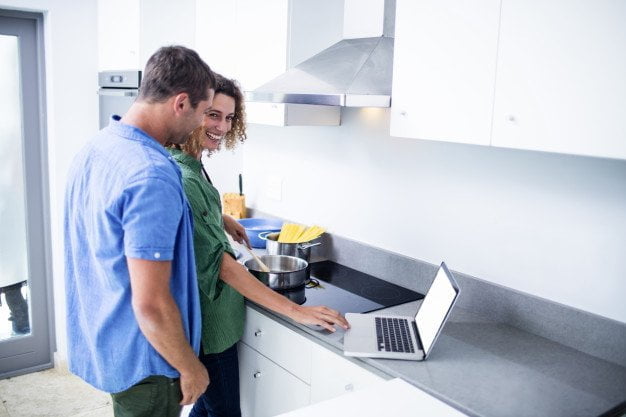Techno Treats – 5 Technologies That Are Changing the Way We Cook
by Mashum Mollah Technology 17 October 2019

Humans have always used different tools and techniques to manipulate food. What we call wheat today was a wild food that we transformed through cross-breeding and other forms of manipulation. The countertop microwave was introduced in the 60s and suddenly dinner could be ready in a matter of minutes.
But, the technological innovation of the past few decades has completely changed the way we prepare food. Things like food processors, saran wrap and induction cookware sets weren’t around three decades ago. Read on to find out how these and other technologies are slowly transforming the way we cook:
1. Sous-vide aka “under vacuum” cooking
The sous-vide method is a type of slow cooking technique. You vacuum seal the food in a special plastic bag and place it inside a temperature-controlled water bath. This method is extremely useful if you want perfectly cooked meat and you’ll save a lot in energy costs.
This will also help you avoid meat that’s overly cooked on the outside and undercooked in the middle. The only downside is that it takes a few days to cook a single dish with this method, but those who’ve tried it say it’s well worth it.
2. Built-in sensors
Thanks to built-in sensors, modern-day ovens know what food you’ve put into them and how long it’ll cook. Sensors in your fridge could tell you exactly what you have, how long it’s been there and what sort of recipes you could prepare with it. All without opening the fridge door. These built-in sensors make cooking and preserving food that much easier.
3. Multimedia cooking tutorials
Traditional recipe books are a thing of the past thanks to cooking blogs and websites. Most of these multimedia sources focus on recipes and cooking tips for home cooks. Each website has thousands of delicious recipes accompanied by stunning, high-definition pictures.
The best part about using a recipe website is that they usually have an easy-to-navigate menu. Instead of paging through a thick recipe book, you can search for recipes using certain keywords like the name of a particular ingredient.
Most popular recipe blogs and websites cater to every diet preference under the sun. It doesn’t matter if you’re vegetarian, vegan, gluten-free or ketogenic, you can make healthy yet flavourful meals effortlessly.
You can also watch recipe videos from online platforms like YouTube and Instagram. Videos are even more convenient than blogs or website recipe articles because you can follow the process along while actively cooking and easily rewind or fast forward the content as needed.
4. Online shopping

Can’t find Manuka honey or saffron from your local store? No sweat! Now you can purchase rare ingredients from all over the world with the swipe of a finger. Online shopping has revolutionized our ability to try out new tastes and flavors without leaving our homes.
5. Social sharing
Cooking has always been a social activity; hence why the kitchen is referred to as the heart of the home. If you look at a social sharing platforms like Pinterest, you’ll find that food is one of the most shared categories online, while food pictures are known for driving engagement and conversation.
Conclusion
Over the past few decades, home cooks and professional chefs have been integrating technology into their kitchens using heat, pressure, vacuums, supersonic sounds and other methods. These and other advancements allow us to prepare food in new ways while using fewer appliances.
The technology we have today is also designed to enhance food and has transformed the cooking process into an effortless exercise.
Read Also:







































































































